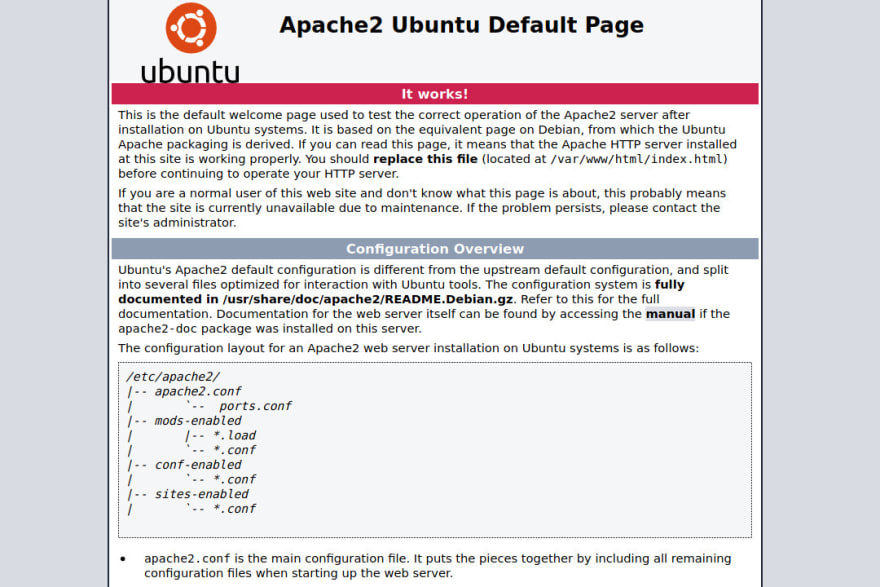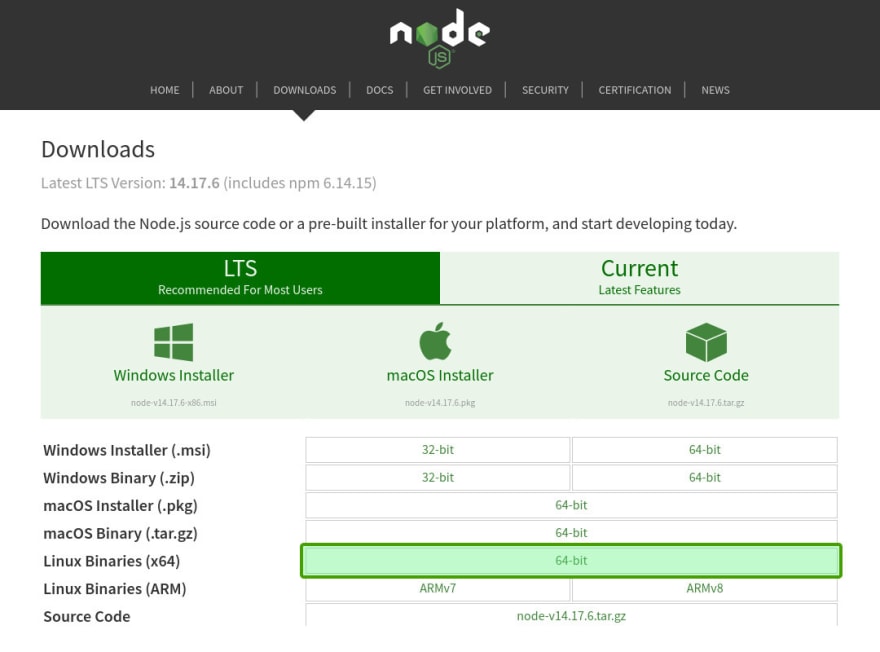This content originally appeared on DEV Community and was authored by Devtonight
LAMP stack or Linux, Apache, MySQL and PHP are the main essential set of tools that you need to develop or run a PHP based web application or a CMS (Content Management System) such as Laravel and WordPress.
Usually, when we develop an application, we create at least 3 different and separate environments for development, stage and production. In this guide, mainly you will be able to learn how to install and set up the LAMP stack. Additionally, you will be able to learn how to install Composer, NPM and troubleshoot possible errors which can be occurred when setting up the MySQL server and phpMyAdmin.
LAMP (Linux, Apache, MySQL, PHP) Stack Setup
Linux Installation
You can install LAMP stack on any Linux distribution such as Ubuntu, Fedora and CentOS. Since different distributions use their package managers, we are using Ubuntu 20.04 LTS for this guide. If you need to install Ubuntu 20.04 LTS, refer to the Ubuntu 20.04 LTS installation guide which explains everything step-by-step.
Software Repository Update
Before installing any application, the very first thing that you need to do is updating the software repository of your system and installing any available updates. You need to execute these administrative commands with “root” privileges, we are using sudo for that. Enter the following commands, the first command will update the repository and the second command will download and install necessary updates. We are using the -y flag to indicate that we do not need to confirm each action.
sudo apt-get update -y
sudo apt-get upgrade -y
Apache, PHP And PHP Modules Installation
Again, enter the following command. It will take few minutes to complete the installation.
sudo apt-get install apache2 curl php php-bcmath php-cli php-curl php-gd php-intl php-mbstring php-mysql php-pgsql php-sqlite3 php-xdebug php-xml php-zip
Now you should be able to access the Apache webserver by going to http://localhost address from your web browser. Make sure it does not start with “https”. If everything is installed properly, you should be able to see the Apache welcome screen.
Now you can access your web pages (PHP, HTML,..) in /var/www/html directory.
Composer dependency manager installation
Composer is a dependency manager which you can use to manage PHP packages in your application. Mainly, Composer eliminates the requirement of manually downloading package files. In addition to that, it maintains a record of which packages and versions have been used for the application that we are developing. Once you included the composer.json and composer.lock files in your source code, another developer can install the required packages with the same versions without making version conflicts.
Enter the following command to download Composer.
curl -sS https://getcomposer.org/installer | php
Make it globally available for all the users in the system, so you will be able to use it anywhere regardless of the path of your project or the user currently logged in.
sudo mv composer.phar /usr/local/bin/composer
Make it executable, then you will be able to use it by typing composer.
sudo chmod +x /usr/local/bin/composer
Now check whether Composer has been successfully installed by entering the following command.
composer -V
It should print the version of Composer.
NodeJS NPM package manager installation
NPM or Node Package Manager is a tool that is similar to Composer but for JavaScript packages. You can use NPM to manage JavaScript packages.
Go to https://nodejs.org/en/download and download the Linux binary tar.xz file.
Open its download directory using the file manager and open a terminal window from there by right-clicking and selecting the “Open in Terminal”.
Type this command in the terminal to create a directory for NodeJS.
mkdir ~/nodejs
Enter the following command to extract the downloaded file to the nodejs directory that we have created. Since the download file name change from time to time with its version numbers, make sure to type the same file name that you have downloaded. We are using the -C flag to mention the destination path and --strip-components=1 to directly extract files in to the nodejs directory.
tar -xf node-v14.17.6-linux-x64.tar.xz -C ~/nodejs --strip-components=1
Now we need to make NodeJS available accessible with terminal, for that type following commands.
echo "export PATH=$PATH:~/nodejs/bin" >> ~/.bashrc
This command will apply the changes and make them available immediately through the terminal.
source ~/.bashrc
Make sure NodeJS and NPM are installed properly by typing the following commands. They should print the current version numbers.
node -v
npm -v
This command is optional, but if you need you can use this command to delete the downloaded file tar.xz.This command is optional, but if you need you can use this command to delete the downloaded file tar.xz.
mv node-v14.17.6.tar.gz
MySQL Server Installation
Run the following command to install the MySQL server.
sudo apt-get install mysql-server
This command is optional since we are building a development environment. But still, you can run the following command to secure the MySQL server if you are concern about the security.
sudo mysql_secure_installation
phpMyAdmin installation
phpMyAdmin is a web-based tool that you can use to browser databases in the MySQL server. Run the following command to install it.
sudo apt-get install phpmyadmin
Once you run that command, within few seconds, it will ask the web server that you are using. Select apache2 by using up/down arrow keys and press space to select it. Then press the tab key to select “Ok” and press enter key.
Again it will ask to configure the database for phpMyAdmin with dbconfig-common, select “Yes” and press the enter key.
After that, it will ask for a password, just leave it blank by pressing the enter key to generate a password by itself.
Now check whether that you can access the phpMyAdmin login page by visiting http://localhost/phpmyadmin. But sometimes you will not be able to login with the “root” MySQL account as it shows an error called “Login without a password is forbidden by configuration”. This is a security measure implemented by phpMyAdmin and you can easily fix it by following how to fix phpMyAdmin “Login without a password is forbidden by configuration” error. Again, you might get another error called mysqli_real_connect(): (HY000/1698): Access denied for user ‘root’@'localhost'. This can be happened due to the default MySQL Unix socket based authentication. Learn how to fix mysqli_real_connect(): (HY000/1698): Access denied for user ‘root’@'localhost' error.
Now try to login to the phpMyAdmin with “root” user and a blank password. You should be able to see a similar page.
Conclusion
In this guide, mainly we explained the installations of Apache web server, PHP and MySQL DBMS (Database Management System). Also, we explained the installations of phpMyAdmin, Composer and NPM package manager. Additionally, we discussed the possible troubleshooting with MySQL server and phpMyAdmin. What do you think about this guide? Let us know your thoughts in the comment section.
Feel free to visit devtonight.com for more related content.
This content originally appeared on DEV Community and was authored by Devtonight
Devtonight | Sciencx (2021-10-19T12:30:42+00:00) How To Install Linux, Apache, MySQL, PHP On Ubuntu. Retrieved from https://www.scien.cx/2021/10/19/how-to-install-linux-apache-mysql-php-on-ubuntu/
Please log in to upload a file.
There are no updates yet.
Click the Upload button above to add an update.






